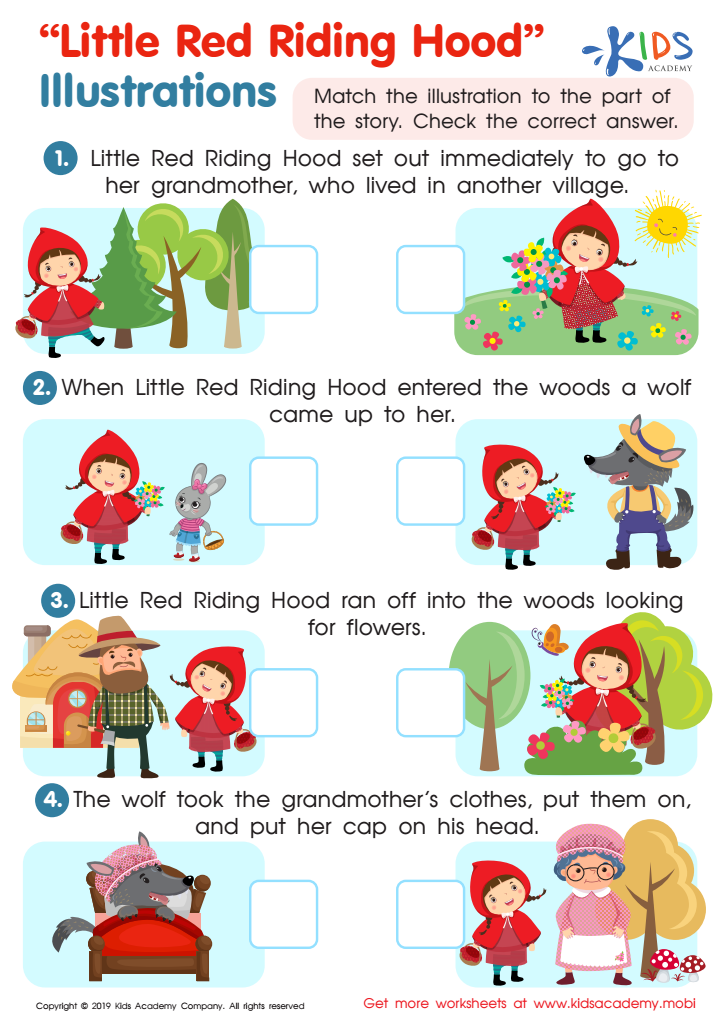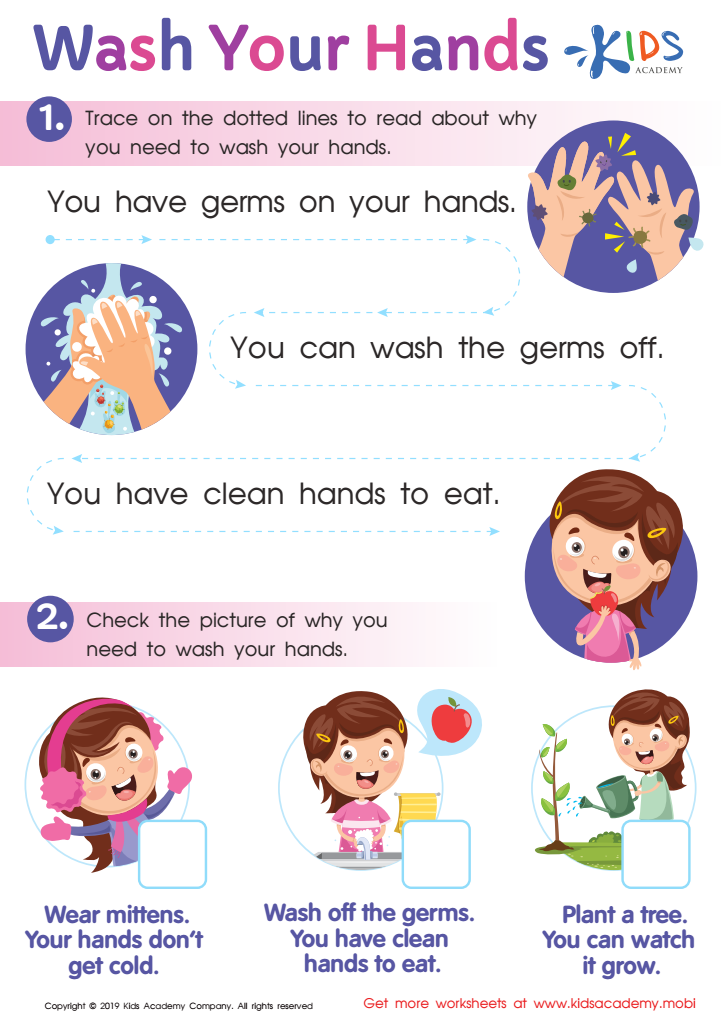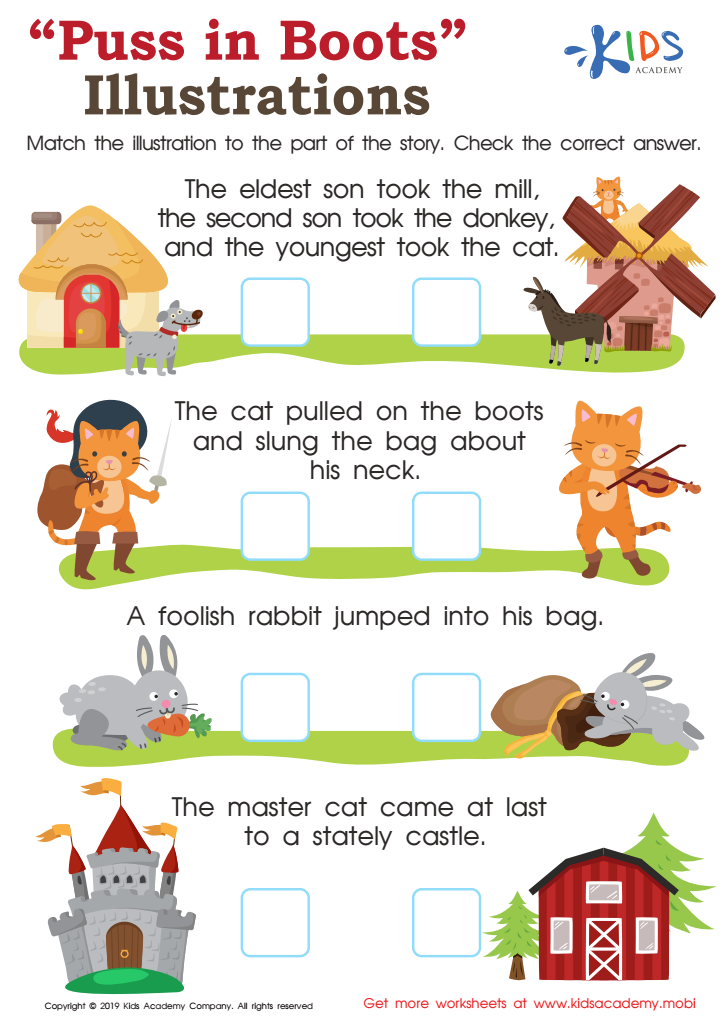Visual interpretation Normal Reading Worksheets for Ages 3-4
3 filtered results
-
From - To
Welcome to our Visual Interpretation Normal Reading Worksheets for Ages 3-4! Designed to support early learners, these engaging worksheets help children develop critical visual interpretation skills essential for reading and comprehension. Through colorful illustrations, simple text, and various interactive activities, kids will enhance their ability to associate images with words, recognize patterns, and understand context. This foundational skill set paves the way for confident reading and language development. Perfect for individualized practice or classroom use, our worksheets are tailored to make learning fun and effective. Explore our collection today and help your child embark on their reading journey!


Little Red Riding Hood: Illustrations Worksheet


Wash Your Hands Worksheet


Puss in Boots Illustrations Worksheet
Visual interpretation skills are crucial for children ages 3-4, as they lay the foundation for literacy and cognitive development. At this age, children are constantly exploring their environment, which includes learning to interpret the visual information around them. Visual interpretation involves recognizing shapes, colors, symbols, and images, helping children make sense of their world.
For parents and teachers, fostering these skills is essential for several reasons. Firstly, strong visual interpretation skills enhance a child's ability to decode written text, aiding in the transition to reading. This early exposure boosts comprehension and encourages a love for books. Secondly, children who can effectively interpret visuals are better equipped to express themselves, as they learn to communicate ideas using images and symbols.
Additionally, visual interpretation is fundamental for developing critical thinking and problem-solving skills, as children learn to analyze and make connections between what they see. Overall, supporting and nurturing visual interpretation in young children is vital; it not only propels their literacy journey but also fosters creativity and independent thinking. Therefore, investing time and resources into activities that promote these skills can significantly benefit a child's educational growth and emotional well-being.
 Assign to My Students
Assign to My Students
















